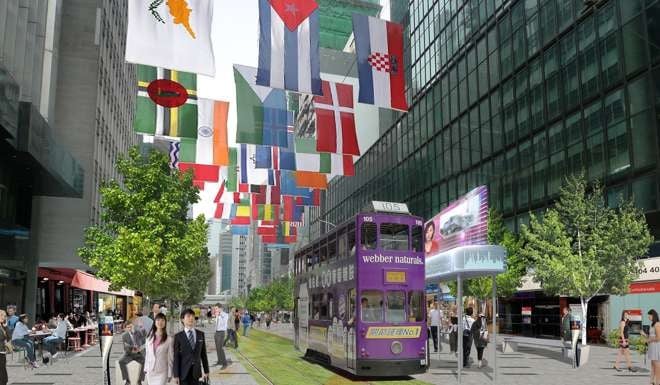
Feet first: section of one of Hong Kong’s busiest roads to become a car-free zone for one day
The 200-metre section of Des Voeux Road Central will feature stalls, a mini football pitch and art displays – and perhaps encourage the public to want more

Part of Des Voeux Road Central in the heart of the city’s business hub will be sealed off later this month to showcase the vision of urban planners on how to convert the busy thoroughfare into a pedestrian-friendly public space without crippling traffic or causing major inconvenience to residents.
Organisers hope the event will persuade Hongkongers into supporting their ultimate goal of permanently rezoning the artery into a car-free zone.
The idea has already won the backing of an academic who is an expert on the issue.
Between 10am and 4pm on September 25, the section of Des Voeux Central between Morrison Street and Man Wa Lane will become a pedestrian-only zone. The 200-metre area will feature booths, stalls and a mini football pitch, while open spaces will be set aside for artists to perform or display exhibits.
Trams will still be allowed through but at lower speeds, while 400 volunteers will act as marshals to ensure pedestrian safety.

Patrick Fung Kin-wai, chief executive of co-organiser the Clean Air Network, said one of the biggest challenges was to persuade the Transport Department into granting a temporary traffic arrangement permit.
“We had to analyse the traffic impact for whole Central and Western district. We also had to deal with police and the Fire Services Department, who were concerned about the potential blockage of emergency vehicular access to the area,” Fung said.
The group spoke to other stakeholders such as public transport operators, who were convinced the idea would not greatly disrupt their operations. About 20 bus routes will be diverted.
Campaign officer Winnie Tse Wing-lam said the group aimed to eventually make the plan permanent and not just one for weekends, when traffic flow is 40 per cent lower.
“We want to change people’s mindset and we know this is not going to be easy. A lot of roadside vendors we talked to agreed pollution was serious in the area, but they held a general perception that this is part of life,” she said.
Pedestrianising the area will help people interact with each other on the streets
Professor Ng Mee-kam, director of Chinese University’s Urban Studies Programme, was supportive of the plan. “We have to learn to co-exist,” she said. “I believe people are smart enough to adapt – remember the Occupy Central protests?”
She was referring to the democracy movement in 2014 when protesters blocked roads around the city for 79 days.
“I’m for non-motorised transport and walking experience. Pedestrianising the area will help people interact with each other on the streets, gaining inspiration and boosting our social capital,” Ng said.